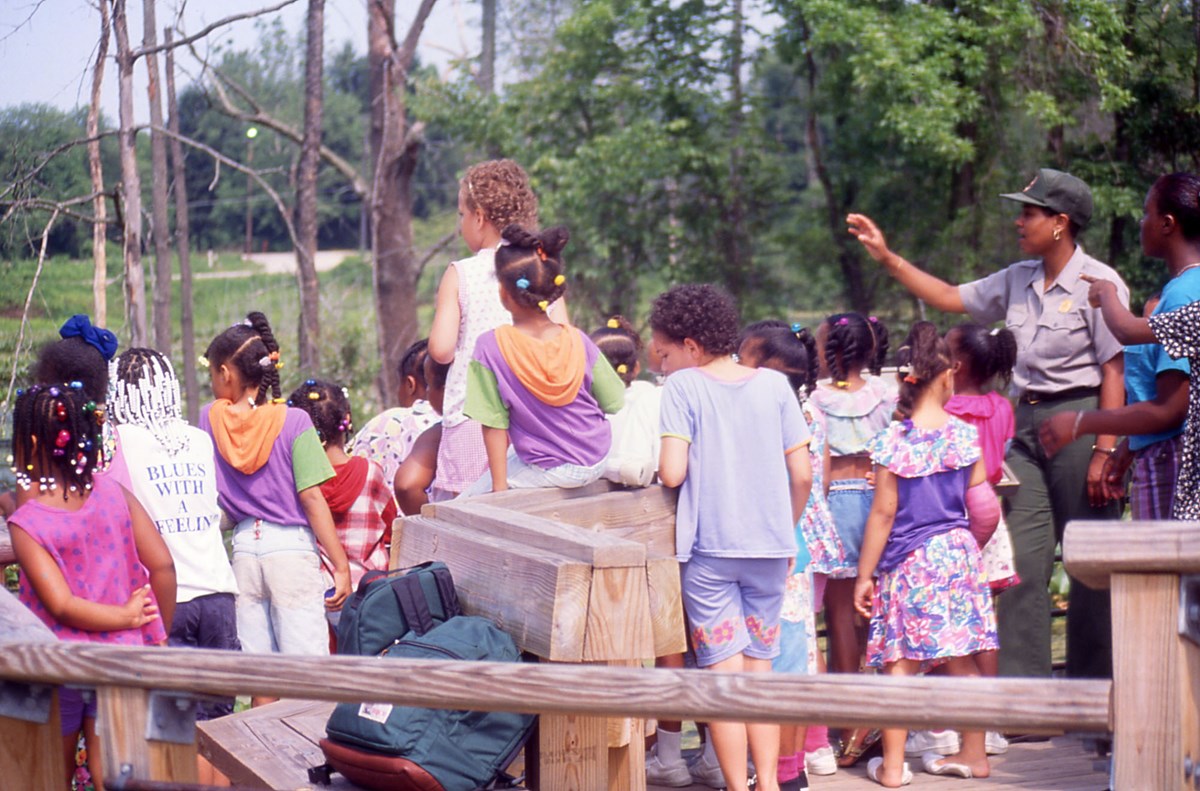Parks and Rec Where They Propose With a Chicken Wing
Women of Cuyahoga Valley

NPS Collection
The public roles of women in Cuyahoga Valley reflect their diverse and evolving roles in society at large. In preparation for the national park's 50th anniversary in 2024-25, park staff are delving deeper into the valley's past. We are looking to tell a more balanced history, one that reflects the contributions of many. Return here to see what stories we've uncovered.
Here is an overview of women's contributions.
- Farmers. Ever since the first Native Americans shifted to an agricultural lifestyle, women have participated in the growing of crops and tending of livestock. Many of the national park's historic buildings relate to farming in the 1800s and 1900s. Some of these continue as working farms under the Countryside Initiative.
- Workers. The valley's two paper factories employed a large number of women, often new immigrants, in the early 1900s. Women were shopkeepers and postmistresses. As parks, camps, and other recreational facilities developed, women had new job opportunities. At the national park, women have been interpretive rangers, law enforcement rangers, scientists, curators, landscape architects, civil engineers, trail workers, managers, and administrative staff.
- Educators. Women have taught in one-room schools in Everett and in Ira. Many women have been involved in the development of the park's Cuyahoga Valley Environmental Education Center. For decades, female schoolteachers have used the valley as an outdoor classroom.
- Advocates. Women have been advocates for valley protection, starting in the national park establishment period and continuing through our various partner organizations. Female community leaders also use the park to improve the lives of the people served by their organizations.
- Outdoor enthusiasts. Women created overnight camps here. Two that remain are Camp Mueller (Phillis Wheatley Association) and Camp Ledgewood (Girl Scouts of the Western Reserve). Women have been leaders and participants in nature study and in outdoor recreation of all kinds.

Celebrating the 19th Amendment
During this centennial year, Jennie Vasarhelyi reflects on the contributions of women to three national park sites in Northeast Ohio.

Harriet Keeler
Memorialized at Brecksville Reservation in the 1920s, Keeler was a Cleveland educator, botanist, author, suffragist, and lover of nature.

Jane Edna Hunter
A national advocate for young Black women, Hunter founded the Phillis Wheatley Association which built Camp Mueller in the Cuyahoga Valley.

Helyn Fiedler Toth
Helyn Fiedler Toth remembers growing up in Hunt House in Everett during the 1920s and 30s.

Josephine Delgado Moss
Part of a large Mexican American family, Josephine Delgado Moss describes growing up along the river and railroad from about 1935 to 1962.

Learning to Farm
Listen to past and present Countryside Initiative farmers talk about how they learned to farm.

Raising a Farm Family
Listen to valley residents talk about roles in their farm families in the early-to-mid 1900s.

One-room School in Everett
Helyn Fiedler Toth and her childhood friend Marjorie Osborne Morgan recall attending the one-room school in Everett.

Sojourner Truth
Sojourner Truth's 1851 "Ain't I a Woman?" speech in nearby Akron became one of the most famous women's rights speeches in American history.
More Stories about Women
Last updated: November 9, 2021
Parks and Rec Where They Propose With a Chicken Wing
Source: https://www.nps.gov/cuva/learn/women-of-cuyahoga-valley.htm
0 Response to "Parks and Rec Where They Propose With a Chicken Wing"
Post a Comment